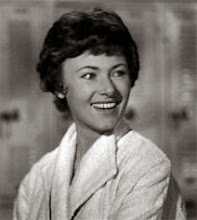"Adam & Eve" 1932 - Tamara de Lempicka
I mentioned artist Tamara de Lempicka in yesterday's post and then I realized that she died on March 18 (today), 1980. So, I thought it would be nice to honor the brilliant woman who contributed so much to the art and design world.
"Lady in Lace" - Tamara de Lempicka
Born into a wealthy family in Warsaw in 1898, Maria Górska (aka Tamara de Lempicka) attended boarding school in Switzerland and spent the winters in Italy and the French Riviera. When her parents divorced in 1912, Maria went to St. Petersburg (Russia... not Florida:-) to live with her aunt.
"Dormeuse" - Tamara de Lempicka
At the age of fifteen, Maria met Tadeusz Łempicki at the opera in St. Petersburg and the two were married in 1916. After his arrest by the Bolsheviks during the Russian Revolution, Maria managed to arrange for her husband's release and the pair eventually made their way to Paris where Maria's (Tamara's) family had also managed to escape. Tadeusz was unable to find work, so they lived for a while off the sale of the Górska's family jewels.
"Autopilot" c. 1925 - Tamara de Lempicka
Her first major show was in Milan in 1925 and she quickly became the most fashionable portrait painter of her generation among the upper class and aristocracy, painting duchesses and grand dukes and socialites. In 1925, she painted her iconic work Auto-Portrait (Tamara in the Green Bugatti) for the cover of the German fashion magazine Die Dame. De Lempicka won her first major award in 1927, first prize at the Exposition Internationale de Beaux Arts in Bordeaux, France for her portrait of Kizette (her daughter) on the Balcony.
"Kizette on Balcony" 1927 - Tamara de Lempicka
De Lempicka's painting technique, influenced by "soft cubism," was bold, yet sensual. Tamara was bisexual and had affairs with both men and women. She was part of the artists scene in the Roaring 20's along with Pablo Picasso, Jean Cocteau, and André Gide. De Lempicka was obsessed with her work and her social life and eventually, her husband abandoned her in 1927. They were divorced in 1928.
"Andromeda" 1929 - Tamara de Lempicka
In 1933, she married her lover and long time patron, Baron Kuffner, securing her place in high society again. De Lempicka continued to work through the Great Depression, feeling little effect. Musuems began to collect her work and 1939, Tamara and the Baron started an "extended vacation" in the United States. She immediately arranged to show her work in New York. Eventually, the couple settled in Beverly Hills where she became 'the baroness with a brush' and a favorite artist of Hollywood stars.
Tamara de Lempicka in her studio
In 1943, the couple relocated to New York City. Even though she continued to live in style, socializing continuously, her popularity as a society painter had diminished greatly. She did war relief work and managed to get her daughter out of Nazi-occupied Paris in 1941. De Lempicka expanded her subject matter to include still lifes and abstracts and eventually adopted a new style, using palette knife instead of brushes. Her new work was not well-received when she exhibited in 1962 at the Iolas Gallery. De Lempicka was determined never to show her work again, and retired from active life as a professional artist.












You need to add the good story about what happened to her ashes!
ReplyDeleteI love her Constructivist/Cubist style. LOVE.
ReplyDeleteI love, love Tamara! She is one of my absolute faves!! Very nice post!!
ReplyDelete